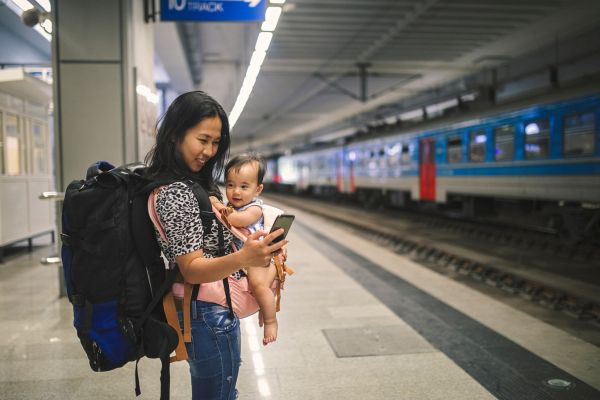Backpacking Southeast Asia has become a rite of passage for travelers seeking adventure, culture, and unforgettable experiences. The region, with its vibrant cities, lush jungles, pristine beaches, and rich history, has long attracted explorers from around the globe. From bustling Bangkok to tranquil Bali, every destination in Southeast Asia offers something distinct and alluring. But behind the postcards and Instagram stories lies a journey that demands preparation, cultural sensitivity, and a spirit of spontaneity.
The Allure of Southeast Asia for Backpackers
One of the primary reasons backpackers are drawn to Southeast Asia is the region’s affordability. Countries like Thailand, Vietnam, Laos, and Cambodia offer excellent value for money, allowing travelers to extend their journeys without draining their bank accounts. Local street food, guesthouses, and public transportation come at a fraction of Western prices, yet deliver a level of charm and authenticity that’s difficult to replicate elsewhere.
But backpacking Southeast Asia is not just about saving money—it’s about immersion. Every destination presents an opportunity to connect deeply with new cultures, languages, and ways of life. Whether it’s attending a full moon party on a Thai island, wandering through the ancient temples of Angkor Wat, or enjoying a traditional homestay in northern Vietnam, the experiences are as diverse as they are memorable.
Navigating the Cultural Landscape
Southeast Asia is a cultural mosaic, and each country offers a distinct set of customs, traditions, and social norms. While most locals are incredibly welcoming to visitors, being respectful of their culture goes a long way. When backpacking Southeast Asia, travelers should make an effort to dress modestly in temples, learn basic greetings in the local language, and understand the importance of gestures and body language.
For example, in many parts of Southeast Asia, it is considered disrespectful to point your feet at people or religious objects. Similarly, touching someone’s head—even a child’s—is often frowned upon. Understanding and honoring these subtleties can transform a casual tourist experience into one that is truly enriching and respectful.
The Joys and Challenges of Travel in the Region
The infrastructure across much of Southeast Asia has improved significantly over the past decade. Budget airlines, reliable bus networks, and widespread internet access have made travel more convenient than ever. Yet, unpredictability is still part of the journey. Delayed buses, last-minute changes in plans, and communication hurdles are par for the course when backpacking Southeast Asia.
However, these small challenges often lead to the most memorable experiences. Missing a train might lead to a chance encounter with a local family. A sudden rainstorm could end in an impromptu gathering under a roadside shelter with fellow travelers. In this part of the world, flexibility is more than a skill—it’s a necessity.
A Tapestry of Natural Wonders
Nature is perhaps the most captivating aspect of backpacking Southeast Asia. The region boasts everything from towering limestone cliffs in southern Thailand to the emerald rice terraces of Bali. Adventurers can dive with whale sharks in the Philippines, hike active volcanoes in Indonesia, or explore the dense jungles of Borneo.
These landscapes provide more than just scenic beauty—they offer a glimpse into the ecological richness and diversity of the region. Responsible tourism is key here. Backpackers are increasingly aware of their environmental impact and are choosing eco-lodges, minimizing plastic waste, and supporting conservation efforts throughout their journey.
The Flavors of Southeast Asia
Culinary exploration is an integral part of the backpacking experience. Every country has its own set of iconic dishes that reflect local ingredients and centuries of tradition. Thailand’s spicy curries, Vietnam’s savory pho, Malaysia’s rich laksa, and Cambodia’s fish amok each offer a sensory journey worth savoring.
Food is more than sustenance in Southeast Asia—it is a gateway to understanding the local way of life. Dining at night markets, sharing meals with locals, and even taking cooking classes provide insights into the values and communal nature of the cultures travelers encounter.
Staying Safe and Healthy on the Road
While backpacking Southeast Asia is generally safe, travelers should exercise common sense and awareness. Drinking bottled water, staying current on vaccinations, and avoiding undercooked foods are fundamental precautions. Likewise, securing travel insurance is advisable, as medical facilities can vary widely across the region.
Petty theft can occur in crowded tourist areas, so being vigilant with belongings is crucial. Fortunately, major backpacking hubs such as Chiang Mai, Hanoi, and Siem Reap are well-equipped to handle tourists and offer reliable support if needed. Maintaining open communication with fellow travelers and locals can also provide timely advice and guidance.
Making Meaningful Connections
One of the most rewarding aspects of backpacking Southeast Asia is the people you meet along the way. Whether it’s fellow backpackers from around the world or warm-hearted locals eager to share their stories, the social fabric of this journey is rich and complex.
Many travelers find lifelong friends while volunteering in a rural village, joining a beach clean-up, or simply chatting over drinks at a hostel. These moments of connection often leave a lasting impact, reshaping perspectives and instilling a deeper appreciation for global diversity.
Conclusion: A Journey Worth Taking
Backpacking Southeast Asia is more than a travel trend—it’s a transformative journey that leaves an indelible mark on those who undertake it. The region’s beauty, diversity, and affordability create the perfect backdrop for adventure, growth, and cultural exchange.
Those who embrace the challenges and open themselves up to new experiences will find Southeast Asia to be a place of inspiration and renewal. From its bustling cities to its serene temples, its lively street food to its untouched landscapes, backpacking Southeast Asia offers a once-in-a-lifetime experience for anyone willing to take the first step into the unknown.



